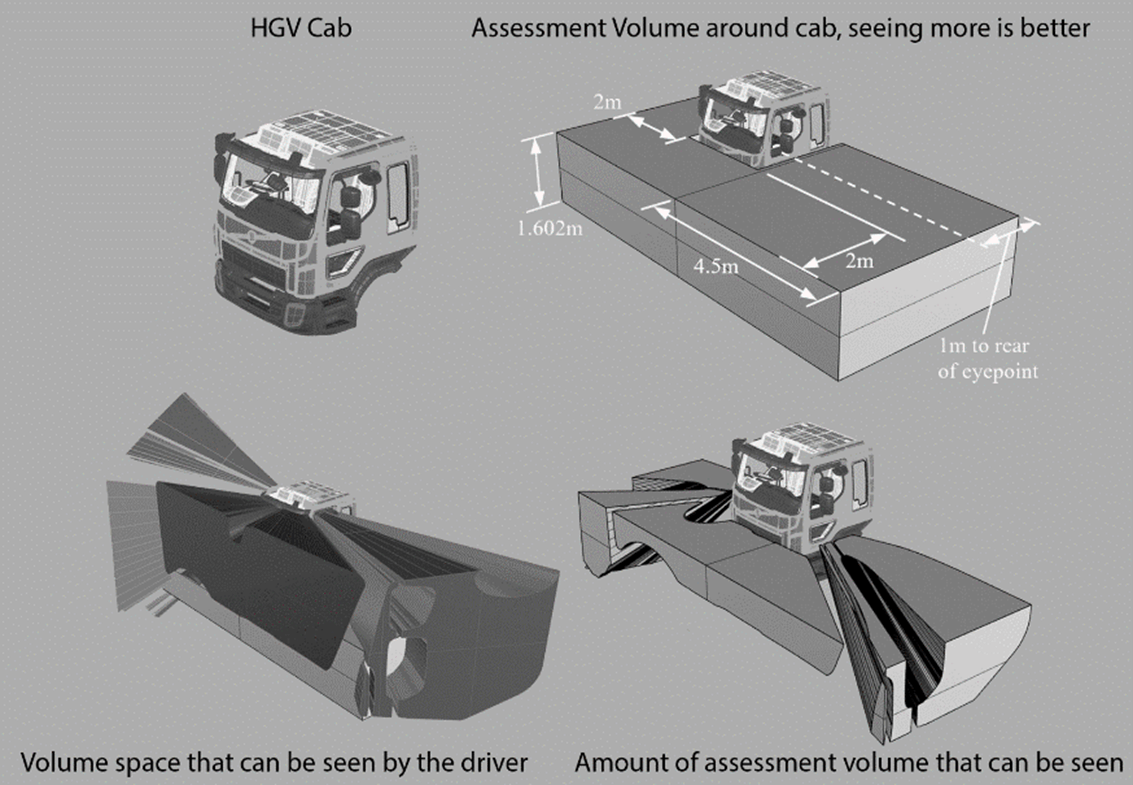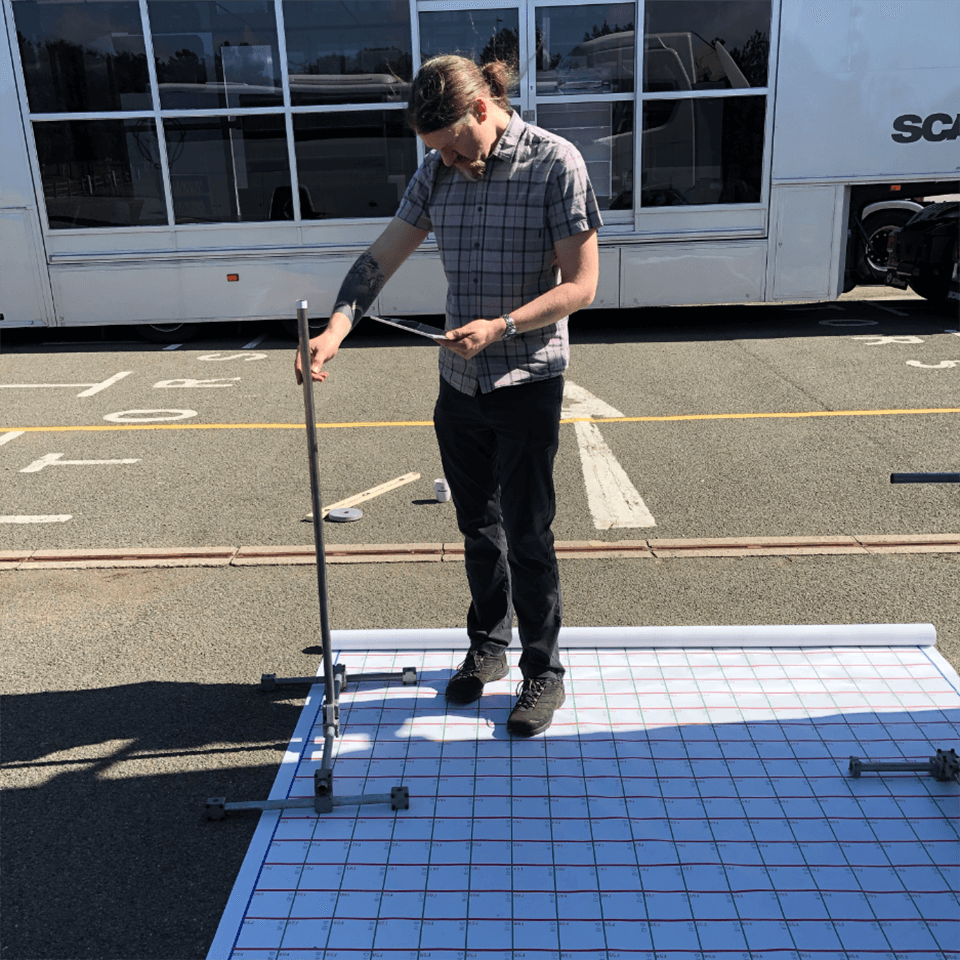Direct Vision Standard
- Project timeframe
- 1 September 2016 - 1 June 2017
- Research area
- Design Ergonomics
- Amount awarded
- £130,000
- Funder ID
- Transport for London
Project leader: Dr Steve Summerskill
The focus of this project is on accident prevention with vulnerable road users such as cyclists and pedestrians.
This research effort which has spanned six projects has been led by Dr Steve Summerskill with the other team members being Dr Russell Marshall, Dr Abby Paterson and Anthony Eland.

Each year approximately 4000 cyclists and pedestrians are killed due to collisions with Heavy good vehicles in European cities. Anecdotal evidence questions the ability of the HGV drivers to clearly see the area in the close proximity to the HGV where pedestrians or cyclists may be present.
The research projects performed by the SCDA team have involved the following:
- Research by the SDCA tea funded by Transport for London (TfL) and the UK DfT have established that there is variability in the performance of vehicle designs with regard to allowing the driver to see cyclist and pedestrians directly (without using mirrors)

- What a driver should be able to see from an HGV was not regulated before this work
- That the requirement to use six mirrors to allow the driver to identify the location of a cyclist or pedestrian is part of the problem and direct vision through windows should be prioritised and standardised
- This led TfL to commission the SDCA team to develop a method by which direct vision can be measured, and to define minimum performance requirements
- This work has been successfully completed and the direct vision standard (DVS) is now running in London, with vehicles which don’t pass minimum DVS requirements being required to have 6 extra safety features fitted
- Further work by the SDCA team for the United Nations Economics Commission for Europe has led to the adoption of the DVS by 58 nations including the whole of Europe
- A progressive minimum requirement has been defined For the UNECE DVS which will require the redesign of most HGVs currently on the market to improve safety. This new standard will be applied to all new models from 2026, and all vehicles on the road by 2029
- The UNECE requirements led to the creation of tests which can be used on either real world, or digital representation of HGV designs.
Aims and objectives
- To define a test method that allows the size of blind spots to be quantified
- Rate all existing vehicles from DAF, SCANIA, VOLVO, Mercedes, IVECO, DENNIS, Renault and MAN
- Define a star based rating scheme where zero star vehicles will be banned from the roads of London
- Redefine and apply the method to all European HGV production.

Impact and importance of the project
The project outcomes mean that all vehicles which fail to meet the minimum requirements of the direct vision standard in London will be fitted with extra safety technology. This creates safer streets in the capital city. The implementation at the UNECE level includes 58 nations including all nations in the EU. In the EU all new vehicles will be required to meet the new minimum requirements by 2026, and all HGVs in Europe will need to comply by 2029. This will require the redesign of most HGVs currently sold. The EU performed an impact assessment which showed that 550 lives per year in the UK and Europe.